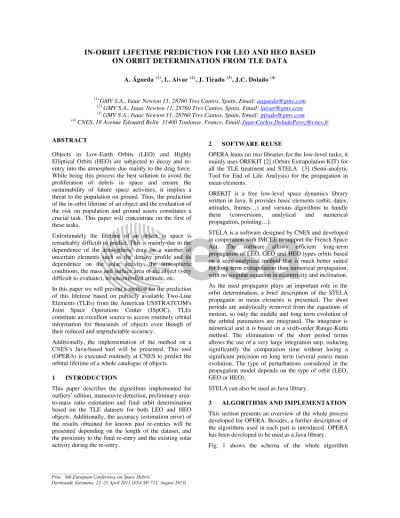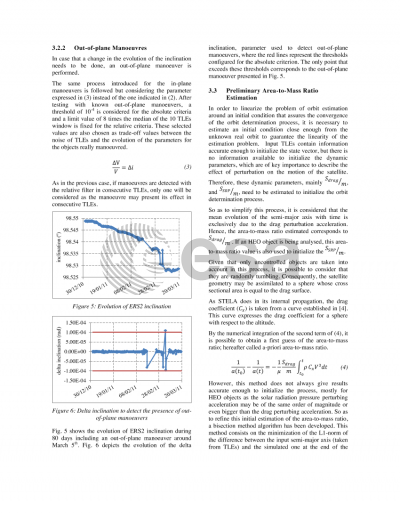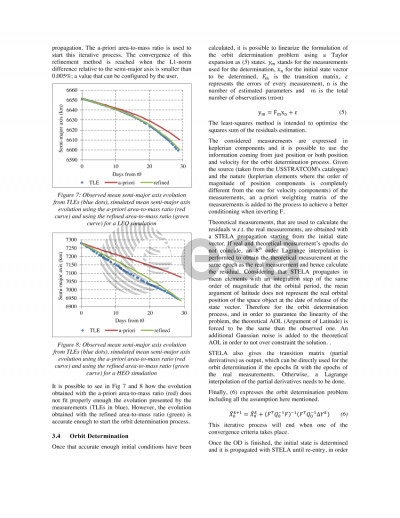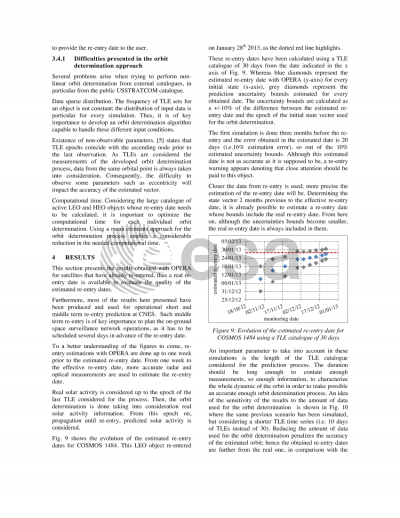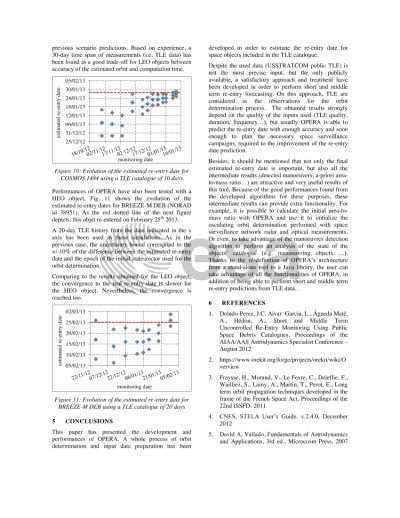Document details

Abstract
Objects in Low-Earth Orbits (LEO) and Highly Elliptical Orbits (HEO) are subjected to decay and re-entry into the atmosphere due mainly to the drag force. While being this process the best solution to avoid the proliferation of debris in space and ensure the sustainability of future space activities, it implies a threat to the population on ground. Thus, the prediction of the in-orbit lifetime of an object and the evaluation of the risk on population and ground assets constitutes a crucial task. This paper will concentrate on the first of these tasks. Unfortunately the lifetime of an object in space is remarkably difficult to predict. This is mainly due to the dependence of the atmospheric drag on a number of uncertain elements such as the density profile and its dependence on the solar activity, the atmospheric conditions, the mass and surface area of the object (very difficult to evaluate), its uncontrolled attitude, etc. In this paper we will present a method for the prediction of this lifetime based on publicly available Two-Line Elements (TLEs) from the American USSTRATCOM's Joint Space Operations Center (JSpOC). TLEs constitute an excellent source to access routinely orbital information for thousands of objects even though of their reduced and unpredictable accuracy. Additionally, the implementation of the method on a CNES's Java-based tool will be presented. This tool (OPERA) is executed routinely at CNES to predict the orbital lifetime of a whole catalogue of objects.
Preview
